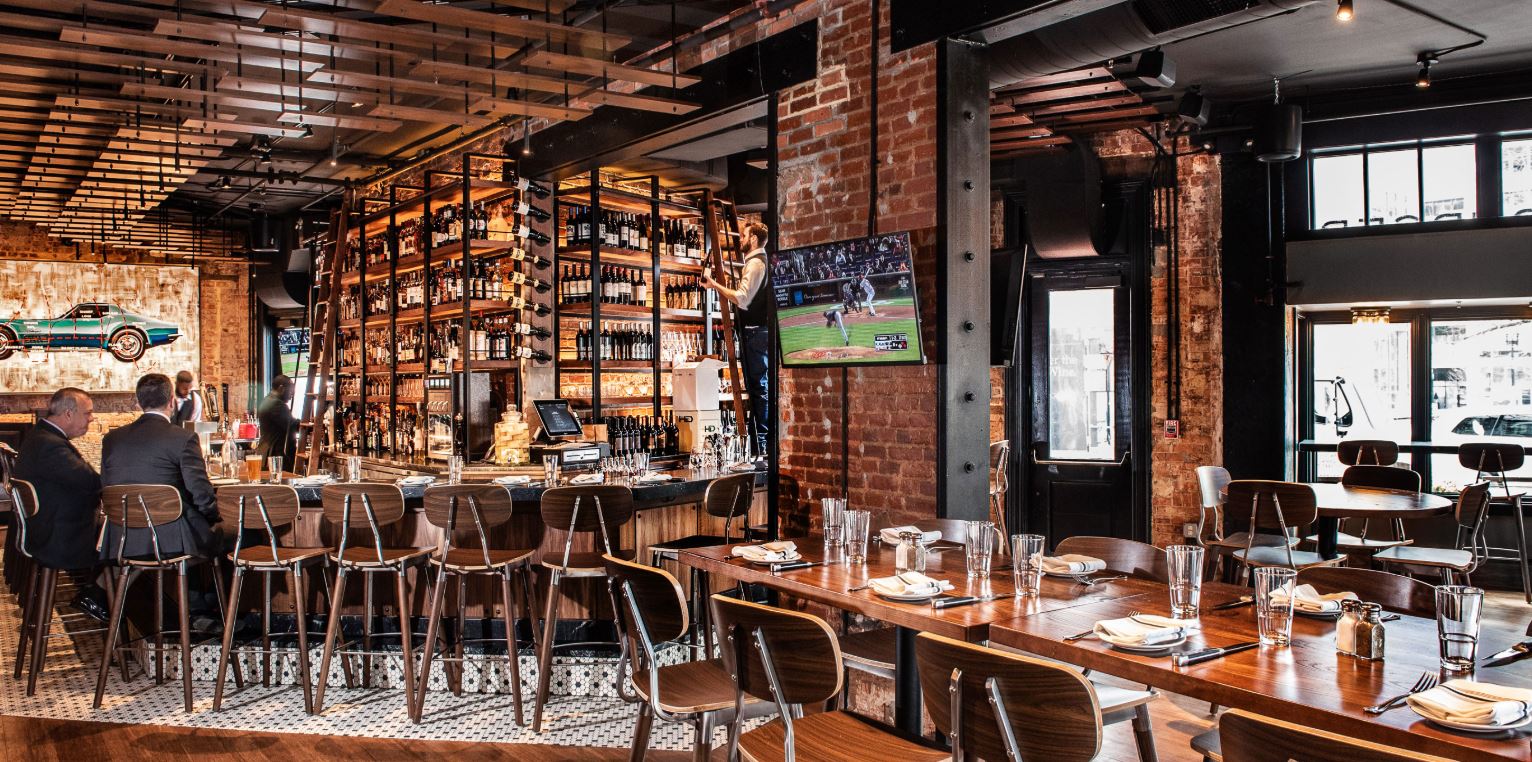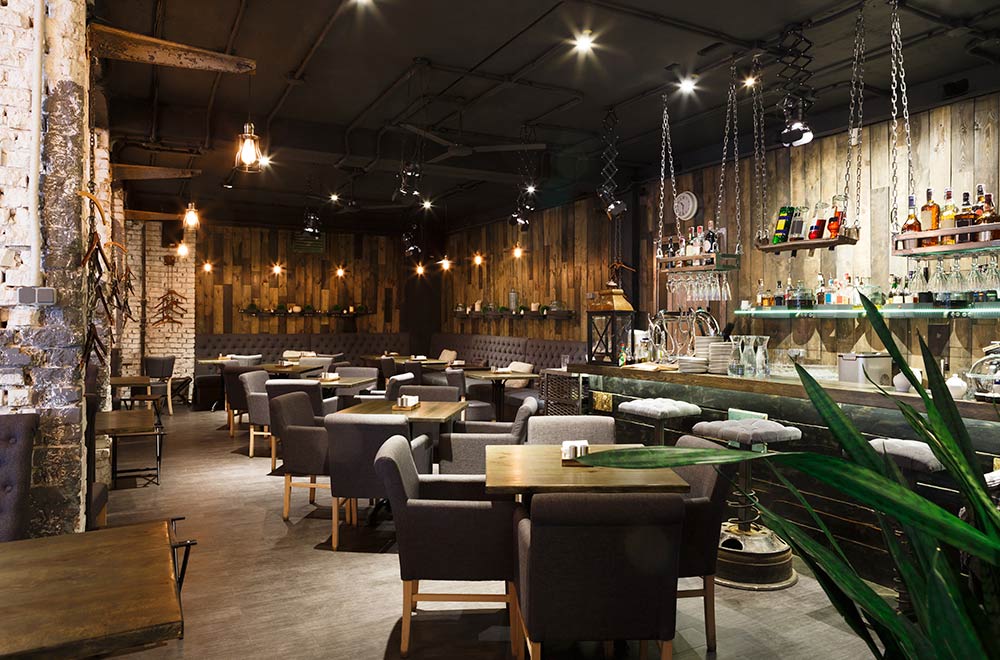Savor Authentic Eastern Cuisine With a Pan-Asian Twist for a Culinary Experience
Beginning on a culinary trip with genuine Eastern cuisine, enhanced with a Pan-Asian twist, offers a distinct possibility to discover the abundant tapestry of tastes that define the region's diverse cooking traditions. As you consider these tempting dishes, think about the cultural stories and historic impacts that shape them, each bite supplying a story waiting to be uncovered. Fine dining experience Islamabad.

Discovering Pan-Asian Tastes
In the realm of worldwide gastronomy, Pan-Asian food attracts attention for its exceptional variety and the unified interplay of flavors from different Asian cultures. This culinary technique celebrates the rich customs and distinct components found throughout the continent, producing a tapestry of tastes that is both gratifying and appealing. Trick to Pan-Asian cuisine is its capacity to balance different flavors-- sweet, salted, spicy, and sour-- while highlighting the freshness and top quality of each active ingredient.
From the umami-rich soy sauce of Japan to the fiery chili peppers of Thailand, Pan-Asian food supplies an extensive scheme of flavors. These components are usually combined in innovative methods, boosting meals with layers of complexity. For example, making use of great smelling natural herbs such as lemongrass and cilantro, typical in Vietnamese and Thai cuisine, includes a revitalizing illumination to recipes, while the incorporation of coconut milk supplies a creamy, rich appearance.
The emphasis on fresh produce and fragrant flavors makes certain that each meal is not just a feast for the preference buds but additionally for the senses. Pan-Asian cuisine welcomes diners to start a cooking journey, checking out the large and varied landscapes of Asian gastronomy with every bite.
Fusion Recipes to Try
While Pan-Asian food is commemorated for its standard flavors, the modern cooking landscape is significantly accepting fusion meals that blend these classic aspects with impacts from other areas. This ingenious method not just honors the abundant heritage of Asian cooking arts yet also presents novel taste experiences that interest contemporary tastes.
A prime instance of such a blend dish is the Korean-Mexican taco, where marinaded bulgogi beef is wrapped in a cozy tortilla, topped with kimchi and a hot gochujang-infused salsa. This mix marries the bold, tasty tastes of Korea with the lively, fresh elements of Mexican cuisine. Similarly, sushi burritos have obtained appeal, amalgamating the fragile artistry of Japanese sushi with the hearty, hand-held benefit of a burrito, typically including blend ingredients like tempura shrimp and avocado with a drizzle of wasabi mayo.
An additional noteworthy dish is Thai curry ramen, which instills the velvety, fragrant spices of Thai curry right into the calming brew of typical Japanese ramen, producing an unified mix that tantalizes the senses. These combination dishes expand beyond simple novelty; they stand for a culinary discussion between societies, urging expedition and advancement worldwide of Pan-Asian food.
Crucial Active Ingredients and Seasonings
To absolutely appreciate Pan-Asian food, one must understand the crucial active ingredients and seasonings that form its structure. This varied cooking design attracts from an abundant tapestry of Eastern practices, using an unified mix of tastes and textures. Trick components include soy sauce, fish sauce, and oyster sauce, which present a full-flavored umami deepness important to Asian recipes. Corresponding to these are rice vinegar and mirin, offering a delicate level of acidity and sweetness.
Aromatic elements are pivotal, with garlic, ginger, and lemongrass being ubiquitous throughout different Pan-Asian recipes. These ingredients give an aromatic base that enhances the complexity of tastes. Spices such as celebrity anise, cardamom, and cinnamon present warmth and personality, echoing influences from areas like China and India.

Food Preparation Strategies and Tips
Mastering the art of Pan-Asian cuisine needs knowledge with its unique food preparation techniques, each adding to the vibrant tapestry of flavors this cooking custom is commemorated for. Central to these techniques is the stir-fry, a quick cooking method that maintains the dietary stability and vivid shades of active ingredients. Using a wok, the stir-fry method permits even warmth distribution, important for attaining the particular texture and flavor balance of Pan-Asian dishes.
Another fundamental technique is steaming, especially common in Chinese cuisine. This gentle technique maintains the natural flavors and nutrients of components, making it suitable for fish and shellfish and vegetables. Dumplings, a precious staple, often benefit from steaming, resulting in soft, succulent structures.
Grilling, also integral, passes on great smoky midsts to recipes such as Oriental bulgogi or Japanese yakitori (asian restaurant isb). This strategy commonly includes marinating active ingredients, enabling flavors to pass through deeply prior to cooking over an open fire or hot plate
Finally, mastering the art of stabilizing flavors-- pleasant, sour, salty, bitter, and umami-- is essential. Properly layering these components can raise a dish from ordinary to phenomenal, providing a complex and pleasing cooking experience that symbolizes the significance of Pan-Asian cuisine.
Eating Experiences Worldwide
Across the world, Pan-Asian cuisine uses an unmatched dining experience, commemorated for its rich tapestry of tastes and vibrant presentations. This cooking phenomenon has actually transcended social limits, capturing the hearts and tastes of food enthusiasts worldwide. In worldwide cities fresh York, London, and Sydney, Pan-Asian restaurants offer as melting pots where cooking practices from Thailand, Japan, China, and beyond converge, giving diners with a diverse mix of dishes that highlight the region's diversity.
The global charm of Pan-Asian food exists in its ability to provide both credibility and development. Cooks skillfully marry standard active ingredients such as lemongrass, soy sauce, and miso with modern methods, causing dishes that are both acquainted and refreshingly new. This blend enables restaurants to get started on a culinary trip that respects heritage while embracing modernity.
Moreover, dining experiences are raised with attentively made settings that mirror the principles of Pan-Asian looks. From minimal Japanese-inspired insides to lively Thai-themed areas, each dining establishment uses an one-of-a-kind setting that enhances click over here the cooking offerings. As a result, clients are not just consuming a dish but partaking in a social experience, making Pan-Asian eating a genuinely global sensation.
Conclusion
The exploration of Pan-Asian cuisine supplies an extensive understanding of the complex interplay of tastes and cooking traditions across Asia. By welcoming combination dishes such as Thai curry ramen and sushi burritos, the cooking trip not just highlights the versatility of standard active ingredients yet additionally showcases ingenious modern techniques. This gastronomic adventure, improved by important flavors and cooking i loved this techniques, offers a distinct chance to value the multiculturalism and cooking virtuosity that define Pan-Asian food on an international range.
Embarking on a cooking journey with genuine Oriental food, boosted with a Pan-Asian spin, uses a distinct possibility to explore the abundant tapestry of flavors that specify the area's diverse cooking traditions.In the world of global gastronomy, Pan-Asian food stands out for its amazing variety and the unified interplay of flavors from numerous Asian societies. Key to Pan-Asian cuisine is its ability to balance contrasting tastes-- wonderful, salted, spicy, and sour-- while highlighting the freshness and quality of each active ingredient.

Comments on “Instagrammable Restaurants Islamabad: Picture-Perfect Dining Experiences”